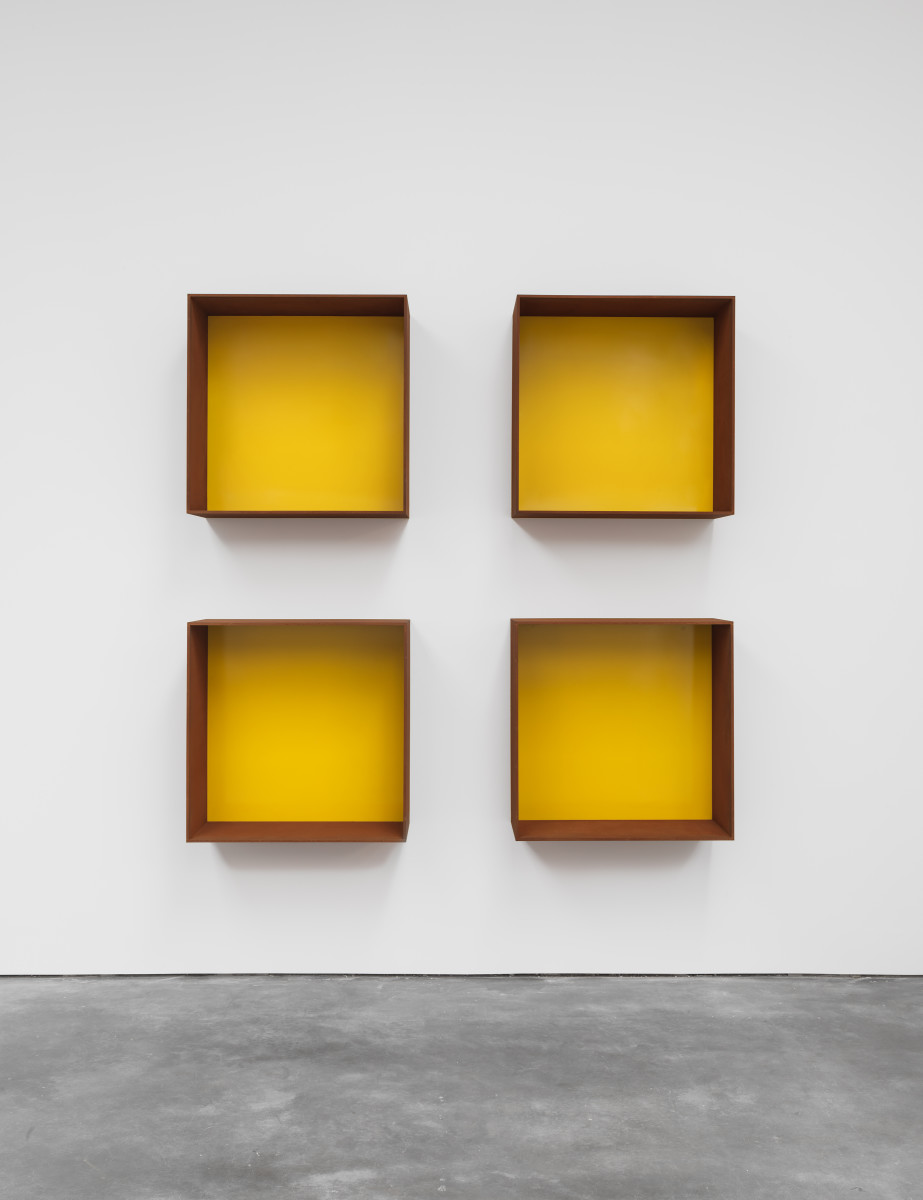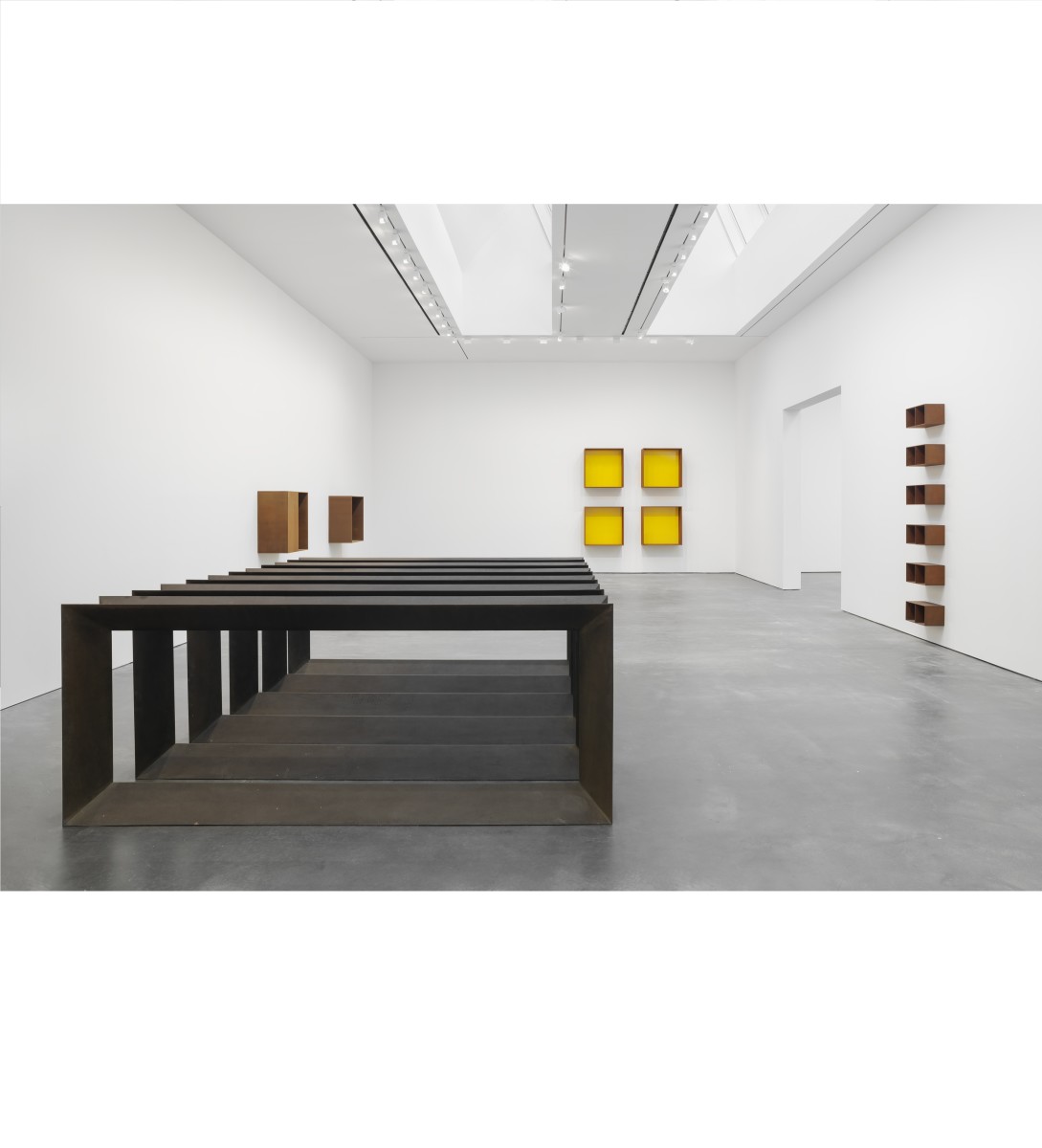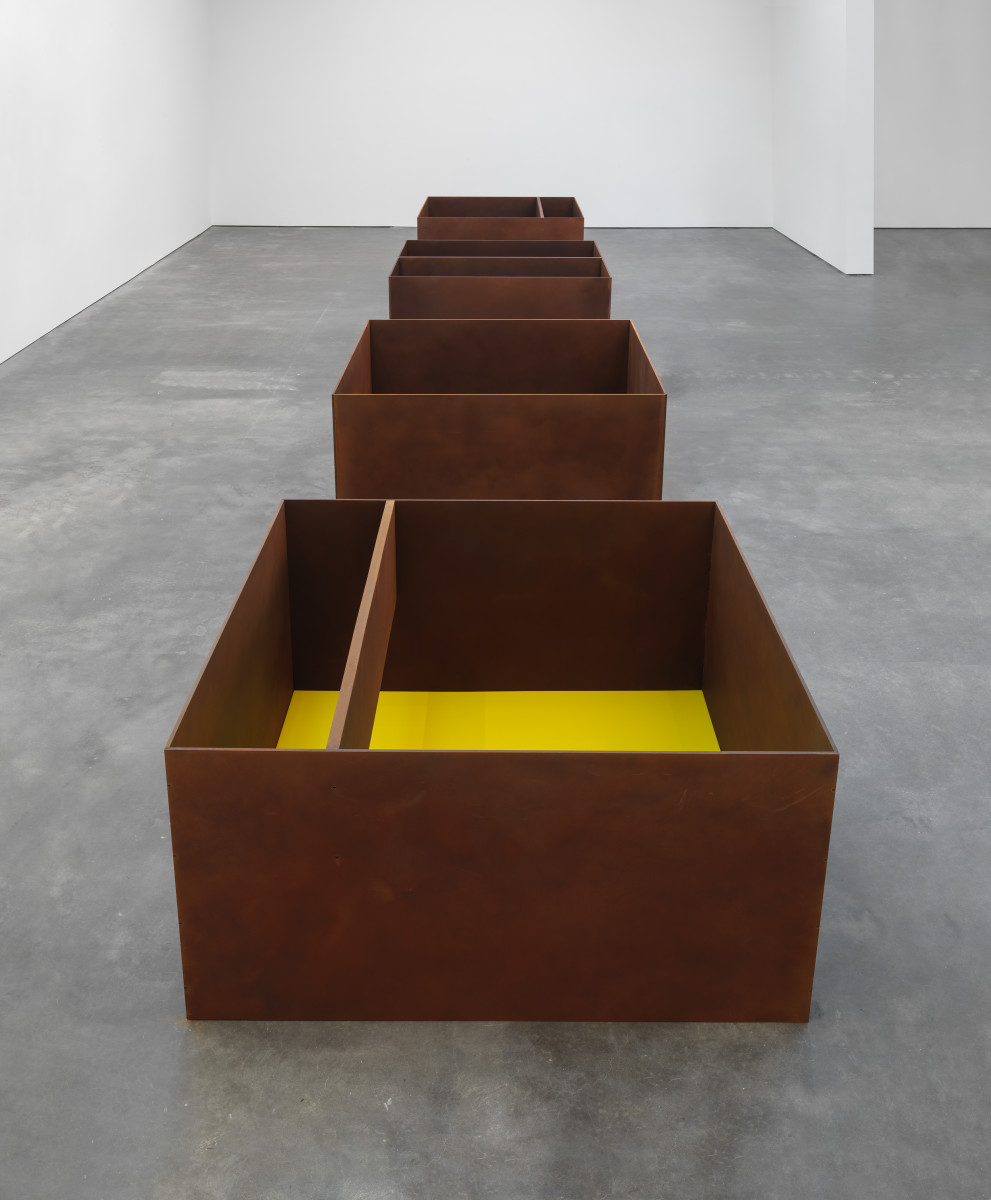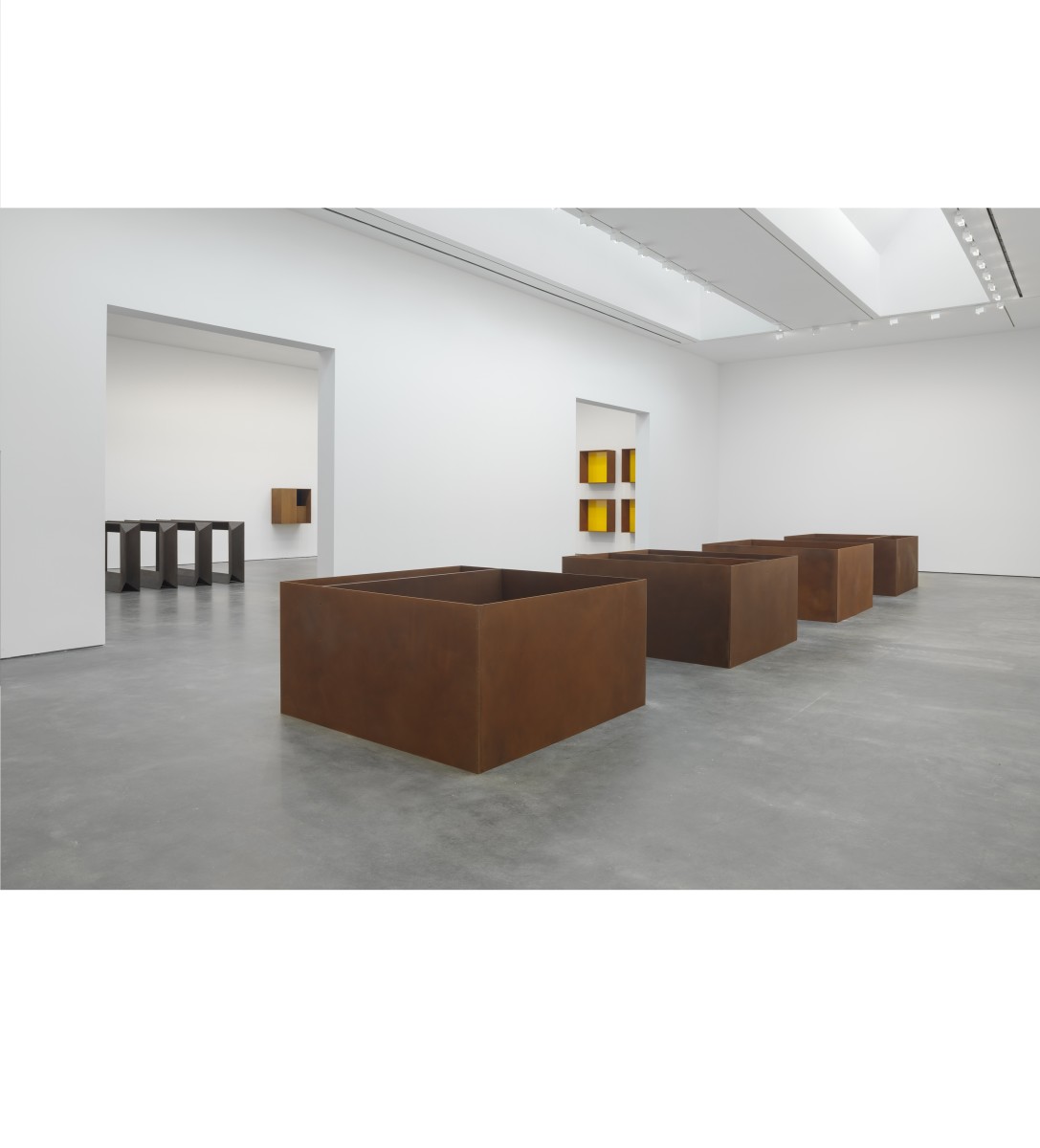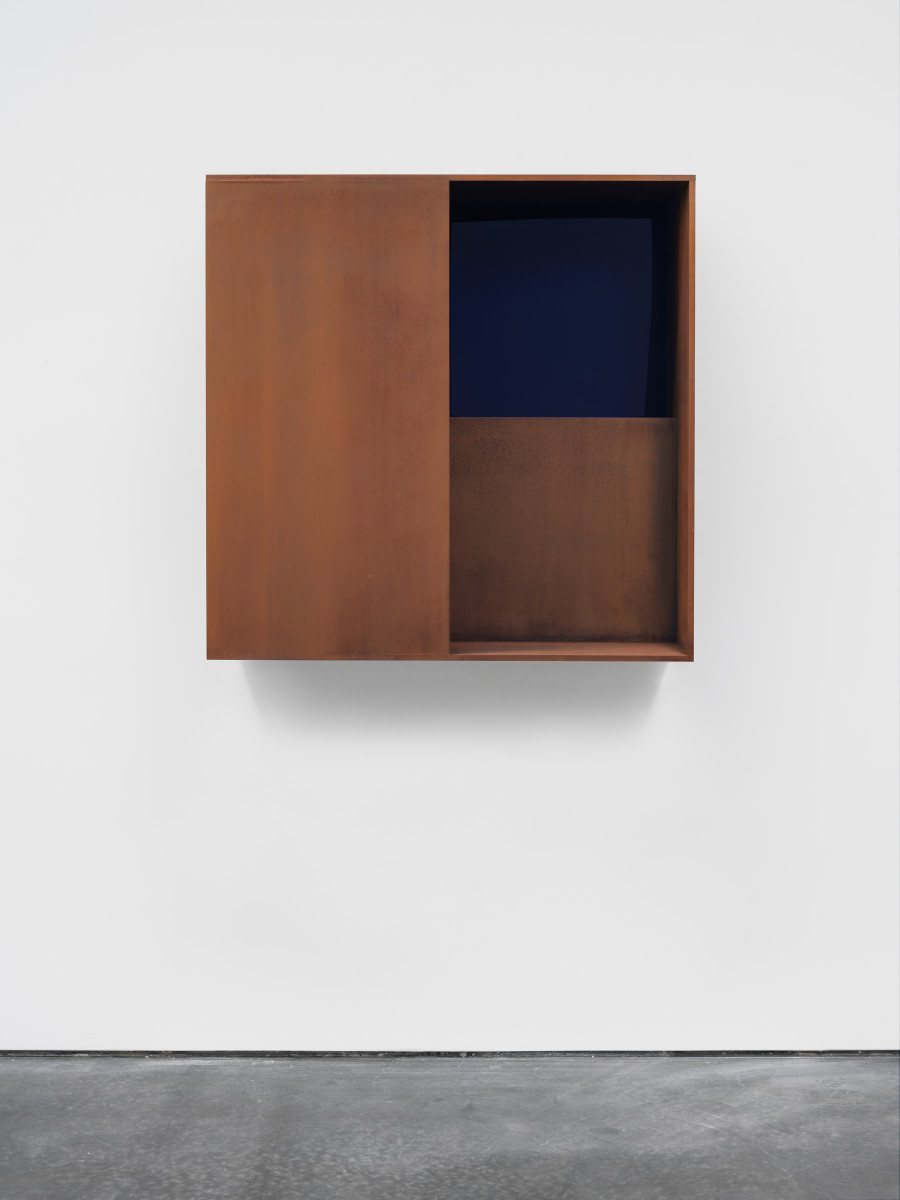People are always saying about Donald Judd that he was a minimalist. And then they, or someone in the vicinity, are always adding that he hated being called a minimalist, as if to defend him (from themselves, in many cases) against a ridiculous slander. Fair enough; these two things are equally valid. But I’m not terribly partial to the descriptor. I have no particular loyalty to Judd’s sense of himself, I just don’t experience the work in a way that quite matches the implications. This is especially the case at the exhibition of Judd’s Cor-ten steel sculptures at David Zwirner’s 20th St. gallery, which closes this Saturday.
Zwirner’s spot is all concrete and teak and right angles, and as good a place as any to see these sculptures. It’s pristine, really–engagingly neutral, the kind of place that makes me very nervous of bumping into something because I’m never quite aware of where the walls are. The exhibition is curated by Flavin Judd, Donald’s son and one of the principals, along with his sister Rainer, of the Judd Foundation (which, if you’re in New York, also administers Judd’s former home and studio in SoHo, which is well worth seeing if you have any interest in anything at all). The Cor-ten works, fabricated primarily in the late 1980s, are rarely exhibited; most haven’t appeared together since a show in 1989. This is in large part, as Flavin said, because they’re temperamental in their spacing, and require a lot of room to breathe.
Cor-ten, much beloved of Judd’s friend Richard Serra and most frequently employed in making, among other things, shipping containers and the façades of new arenas in Brooklyn, is a type of steel alloy that’s rusty by design—the red-brown patina it develops after exposure to the elements protects it from further corrosion. The result is an almost velvety texture, like cocoa powder, and makes for a very particular experience in the context of Judd’s inflexible geometry, the “specific object.”
Installation view, Donald Judd, David Zwirner, New York, 2015. Art © Judd Foundation. Licensed by VAGA, New York, NY. Courtesy David Zwirner, New York/London
Central to his approach was the rejection of context, in all but the immediate spatial and architectural senses. This leads to a lot of borderline psychobabble with respect to meaning, that being a tricky thing to work around in a self-help, confessional society such as ours. Judd once wrote, in one of his many cranky essays, about a difficulty I think is common in his viewership, when “you know [the work] is good but you can’t stand standing there long enough to find out why.” He meant it in terms of the practical composition of gallery or museum, but it also applies more broadly. It can be hard to settle into a thing if you’re not in the habit. Confronted with a pure exercise in space, it is tempting for all but the real devotee to glance and wander and nod, hands in pockets, in a circuit, and right back out the door. Sort of a funny thing, Judd’s work being conceptually, above all else, absolutely universal—experiences of physical space, the quirkier bits of physics aside, so constant and predictable to us all. The solution is (as Judd implied) to spend more time with the thing.
For all the order of Judd’s work, the precision and rigidity, there is also a hint of something like chaos in it. The 10 sculptures are spread out across two rooms on the gallery’s first floor, giving you plenty of opportunity to approach each from several angles, which you should. In the center of the back room are four large free-standing cubes, open on their tops which, as you approach them, and can look down into them, blossom into increasingly complex arrays of shadow, light, texture, line, and color. In the other room you’ll find four boxes attached to the wall, Cor-ten around yellow lacquer; I found myself lost, both in the boxes themselves and the negative space of the wall framed in by them, wandering back and forth, from one side to the other. On another wall perpendicular to these is a series of six smaller boxes lined up vertically and split down their middles, an arrangement (an especially familiar one in Judd’s work) that allows a sort of optical illusion as you approach and back away; they come together, form a line that seems to continue down through the floor, then detach from one another, become singular, then arrange themselves again.
To view Judd’s sculptures and take the time to feel them is to commune in a certain way with something elemental. A grand order diffused through the sheer volume of potential angles from which to view it. Put simply, it’s worth the time to wait and find out why.
